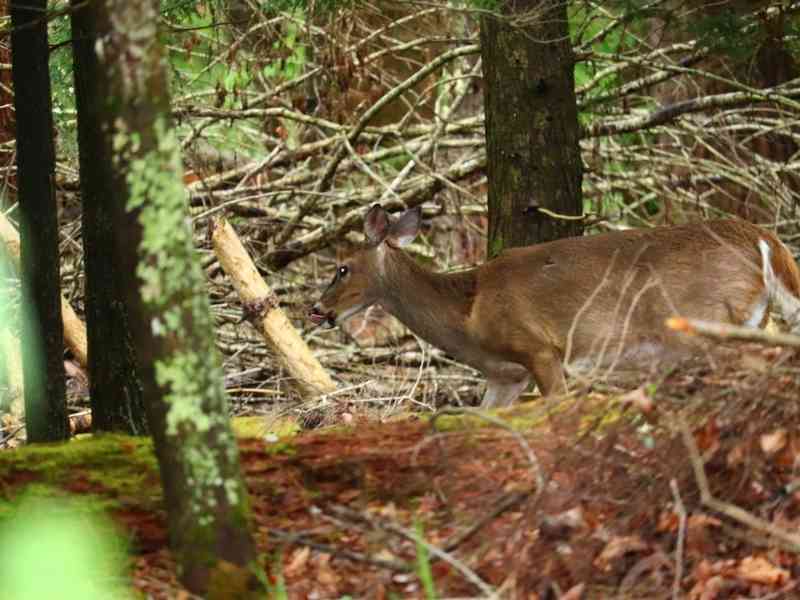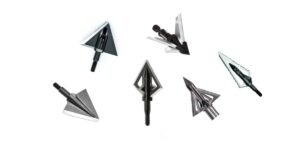Lucky Buck Mineral is a meticulously crafted blend of minerals to bolster deer’s health and antler growth.
It’s backed by scientific research, is user-friendly, and won’t break the bank.
In this comprehensive guide, we’ll delve into the workings of Lucky Buck Mineral, its application, and where to procure it.
Contents (Jump to Topic)
ToggleHow Lucky Buck Mineral Works
It´s for year-round usage! Spring is the preferred time to use.
Lucky Buck Mineral is not your ordinary salt lick or mineral block.
It’s a unique formula that contains the optimal ratio of selenium, copper, and zinc, essential for deer health and antler development.
No products found.
| Nutrient | Minimum | Maximum |
|---|---|---|
| Calcium (CA) | 12.5% | 13.5% |
| Salt (NaCl) | 64.0% | 65.0% |
| Iodine (I) | 46 ppm | – |
| Selenium | 59 ppm | – |
INGREDIENTS: Salt, Calcium Carbonate, Sodium Selenite, Zinc Oxide, Manganous Oxide, Ferrous Carbonate, Iron Oxide, Copper Oxide, Cobalt Carbonate, Calcium Iodate, Natural and Artificial Flavors, Mineral Oil
Comply with local laws and regulations regarding deer baiting and feeding. Get an understanding of your state’s specific regulations before you get started!
Link: https://www.lucky-buck.com/blogs/state-baiting-regulations
Understanding Deer Nutrition
Deer are ruminants, animals with a stomach divided into four compartments, allowing them to digest a wide range of plant materials.
Their diet varies with the seasons but generally consists of leaves, twigs, fruits, nuts, and grasses.
The quality of their diet directly impacts their health, growth, and reproductive success.
Essential Nutrients for Deer
- Proteins: Crucial for growth, maintenance, and reproduction. They are especially important for fawns and pregnant or lactating does.
- Carbohydrates: Provide energy. In summer and fall, deer consume fruits and nuts rich in carbohydrates to build fat reserves for winter.
- Fats: Essential for energy storage and insulation, especially in colder months.
- Vitamins and Minerals: Vitamins A, E, and B-complex are vital, along with minerals like calcium, phosphorus, magnesium, and potassium.
These support bone and antler growth, muscle function, and overall health.
Seasonal Dietary Changes
- Spring: Diet is high in protein with emerging green vegetation. This aids in recovering from winter and supports the growth of fawns and antlers.
- Summer: Focus shifts to carbohydrates with the availability of fruits and nuts.
- Fall: Deer eat heavily to increase fat reserves for winter.
- Winter: Diet consists mainly of woody browse (twigs, shoots) due to scarcity of other food sources.
Nutritional Deficiencies and Their Effects
Poor nutrition can lead to reduced body size, poor antler development, and lower reproductive success. In severe cases, it can cause mortality, particularly in harsh winters.
Supplemental Feeding and Its Role
Supplemental feeding can help balance nutritional deficiencies, especially in areas with limited natural food sources.
Introduce supplements gradually and ensure they are appropriate for the deer’s dietary needs to avoid digestive issues or nutritional imbalances.
The Role of Minerals in Deer Health and Antler Growth
Minerals play a critical role in the health and development of deer, particularly in the growth of strong, healthy antlers.
Key Minerals and Their Functions
Calcium and Phosphorus: These are the primary minerals for antler growth. Antlers are composed of about 50% minerals, primarily calcium and phosphorus. These minerals are also vital for bone health and the overall structural integrity of the deer’s body.
Magnesium: Works in conjunction with calcium and phosphorus. It’s essential for enzyme systems and metabolic processes.
Selenium: Acts as an antioxidant, protecting cells from damage. It’s crucial for immune function and works synergistically with vitamin E.
Zinc: Vital for wound healing, reproductive health, and metabolism. Zinc influences antler development in terms of size and structural integrity.
Copper: Important for blood formation, connective tissue strength, nerve function, and pigmentation. It plays a role in antler growth and overall health.
Antler Growth and Mineral Availability
Antler growth is a metabolically expensive process that requires an abundant supply of minerals.
The availability of these minerals in the deer’s natural habitat can vary, affecting the quality of antler growth.
Dr. Bronsin Strickland and Dr. Steve Demarais found that regions with mineral-rich soils tend to produce deer with larger and healthier antlers. Here´s the link
Here´s another nice read about the topic: Soil fertility tied to size of antlers – By Paul A. Smith of the Journal Sentinel Sept. 11, 2013T
Nutritional Imbalances and Their Impacts
A lack of essential minerals can lead to poor antler growth, weakened immune systems, and overall poor health in deer.
This is particularly evident in regions with poor soil quality, where natural mineral content may be insufficient.
Supplemental Feeding for Mineral Intake
Supplemental mineral feeds, like Lucky Buck Mineral, can compensate for these deficiencies.
Providing a balanced blend of essential minerals significantly improve antler growth and general deer health.
Several studies have demonstrated the importance of nutrition in deer health and antler growth.
For instance, a study by the University of Georgia showed that improved nutrition led to earlier and more substantial antler growth in young bucks.
Another study published in the “Journal of Wildlife Management,” indicated that high-protein diets resulted in better body and antler development than deer with lower protein intake.
Natural vs. Supplemental Feeding in Deer Nutrition
The debate between natural and supplemental feeding is crucial in deer management.
Both methods have advantages and challenges.
Natural Feeding: Pros and Cons
Pros:
- Balanced Diet: Natural foraging provides a diverse diet typically well-balanced for deer nutritional needs.
- Healthier Ecosystem: Encourages natural behaviors and supports a healthy ecosystem by maintaining the food chain and habitat balance.
- Disease Control: Less risk of disease spread compared to concentrated feeding areas
Cons:
- Nutrient Variability: The availability and quality of natural food sources can vary greatly depending on season and habitat quality.
- Environmental Impact: Overbrowsing can lead to habitat degradation in areas of high deer density.
Supplemental Feeding: Pros and Cons
Pros:
- Nutritional Support: Helps to fill gaps in nutrition, especially in areas with poor natural food sources or during harsh seasons.
- Enhanced Health and Growth: This can improve body condition, antler growth, and overall health.
- Population Management: Aids in supporting deer populations in managed areas or reserves.
Cons:
- Disease Risk: Concentrated feeding can increase the risk of disease transmission among deer (interesting article by the National Deer Association about CWD, baiting, and feeding)
- Dependency: There’s a risk of deer becoming dependent on supplemental feeds, affecting their natural foraging behaviors.
- Imbalanced Diet: If not managed correctly, supplemental feeding can lead to nutritional imbalances.
Balancing Natural and Supplemental Feeding
The key is to balance both methods.
Supplemental feeding should be used strategically to address specific nutritional deficiencies or when natural food is scarce.
It should not replace natural foraging but rather complement it.
Setting Up and Managing a Supplemental Feeding Program with Lucky Buck Mineral
When it comes to supplementing the diets of deer, you need to introduce new feeds slowly and steadily to prevent any digestive disruptions.
The supplements you choose should be top-tier, explicitly designed for deer like Lucky Buck. This isn’t the time to skimp on quality.
Keep a keen eye on the consumption habits of the deer.
How much are they eating? Also, when choosing your feeding station locations, think like a deer—select areas that are easily accessible, safe from predators, and free from disturbances.
Ideally, these spots should be near natural food and water sources but not so close that it disrupts their normal foraging patterns.
It’s a delicate balance, much like finding the perfect camping spot.
Strategically place multiple feeding stations around the area. This will also help ensure all deer get their fair share of the supplements.
Follow the recommended usage instructions religiously to avoid overconsumption.
Remember, these supplements are meant to complement, not replace, their natural foraging.
It’s like adding a multivitamin to your diet, not substituting it for meals.
Monitoring Deer Health and Behavior in Supplemental Feeding Programs
Also, don´t forget to monitor your results! Effective monitoring of deer health and behavior.
This is a crucial component of any supplemental feeding program.
It helps in assessing the effectiveness of the feeding strategy.
Key Health Indicators to Monitor
Body Condition: Observe the deer’s overall body condition. A healthy deer should have a well-rounded body, not too thin or overly fat.
Coat Quality: A shiny, thick coat is a sign of good health. Dull, patchy, or thinning fur can indicate nutritional deficiencies or health issues.
Antler Development: For bucks, antler size, shape, and health directly indicate nutrition quality. Look for robust and well-formed antlers.
Behavioral Signs: Healthy deer are alert and active. Signs of lethargy, disorientation, or aggression can indicate health problems.
Recording and Analyzing Data
Maintain detailed logs of observations of deer health and behavior. Use your trail cam and take videos for more detailed analysis and comparison over time.
Regularly review collected data to identify trends, issues, or needed adjustments.
Also, avoid actions that significantly alter natural deer behavior.
Minimize human contact with deer to prevent habituation.
Ensure monitoring complies with wildlife laws and ethical guidelines.
Impact of Nutrition on Deer Population Management
Nutrition plays a pivotal role in managing deer populations.
It affects their health, reproductive success, and survival rates, which in turn influence the overall stability and growth of deer populations.
Here´s another interesting article I found on this topic by HI-PRO Feeds: https://hiprofeeds.com/blog/importance-of-managing-whitetail-populations-on-range-quality-nutrition-and-deer-performance
Nutritional Influence on Reproductive Success
Fertility Rates: Adequate nutrition significantly increases the fertility rates in does. Well-nourished does are more likely to conceive and bear healthy fawns.
Fawn Survival: Proper nutrition impacts the survival rates of fawns. Malnutrition can lead to higher fawn mortality due to weaker immune systems and lower birth weights.
Population Health and Longevity
Disease Resistance: Well-nourished deer are more resistant to diseases and parasites, contributing to higher survival rates and healthier populations.
Longevity: Adequate nutrition can extend the life span of individual deer, leading to more mature and stable populations.
Carrying Capacity and Habitat Management
Sustainable Populations: Proper nutrition helps maintain deer populations at levels that the habitat can sustainably support, known as the carrying capacity.
Habitat Quality: Overpopulation due to high reproductive rates can lead to habitat degradation. Managing nutrition helps control population growth to match the available resources.
Benefits of Lucky Buck Minerals for Deer Management
No products found.
Lucky Buck Mineral offers a comprehensive solution for deer hunters and wildlife enthusiasts aiming to enhance the health and size of their deer.
This unique blend of essential minerals, including selenium, copper, and zinc, is scientifically formulated to support robust antler growth and bolster overall deer health.
The benefits of incorporating Lucky Buck Mineral into your deer management program are:
- Enhanced Antler Growth: By providing the key minerals needed for antler development, Lucky Buck Mineral can help grow larger, healthier antlers, making it an ideal supplement for trophy hunters.
- Improved Overall Health: The minerals in Lucky Buck Mineral support various aspects of deer health, from immune function to wound healing and reproductive health, contributing to a healthier and more resilient deer population.
- Balanced Nutrition: This supplement fills the gaps in nutrition that deer might face in their natural habitat, particularly in areas with mineral-deficient soils.
- Ease of Use: Lucky Buck Mineral is easy to use and can be introduced into a feeding program without much complexity, making it accessible for both seasoned hunters and beginners.
- Adaptability to Feeding Programs: Whether used as part of a larger supplemental feeding strategy or as a standalone product, Lucky Buck Mineral is versatile and can be integrated seamlessly into various deer management plans.
- Supporting Sustainable Populations: By improving deer’s health and reproductive success, Lucky Buck Mineral aids in maintaining sustainable deer populations that are in balance with their environment.
- Compliance and Responsibility: With its focus on natural, beneficial ingredients, Lucky Buck Mineral aligns with ethical wildlife management practices and encourages compliance with local laws and regulations.
It’s a responsible, effective, and scientifically-backed way to ensure deer receive the essential nutrients they need for optimal growth and health, ultimately contributing to the success and sustainability of wildlife management efforts.
Sources:
https://www.msudeer.msstate.edu/docs/articles/Mapping%20Antlers%20and%20Expectations%20-%20Quality%20Whitetails.pdf
https://archive.jsonline.com/sports/topstories/study-finds-midwest-deer-sporting-the-biggest-antlers-b9995814z1-223391841.html/#ixzz2qPNrEhfb
https://hiprofeeds.com/blog/importance-of-managing-whitetail-populations-on-range-quality-nutrition-and-deer-performance
https://www.jstor.org/stable/3796954
https://ugadeerresearch.org/antler-biology/
https://archive.jsonline.com/sports/topstories/study-finds-midwest-deer-sporting-the-biggest-antlers-b9995814z1-223391841.html/#ixzz2qPNrEhfb
https://deerassociation.com/can-baiting-and-feeding-really-spread-deer-diseases-faster/
https://www.msudeer.msstate.edu/docs/articles/Mapping%20Antlers%20and%20Expectations%20-%20Quality%20Whitetails.pdf







Conversation | 2 comments:
I’ve used it great product deer love it but it’s expensive and I have found alternative products cheaper and more quantity for same price
Thanks for your input! Could you share the name of the cheaper alternative you found?